HOME > Exhibitions > Past
- Special Exhibition "Splendid Hina Dolls from the Toraya Collection" is closed to prevent further expansion of coronavirus (COVID-19) infection.
Special Exhibition
Splendid Hina Dolls from the Toraya Collection
- Saturday, February 22 - Sunday, March 29、2020
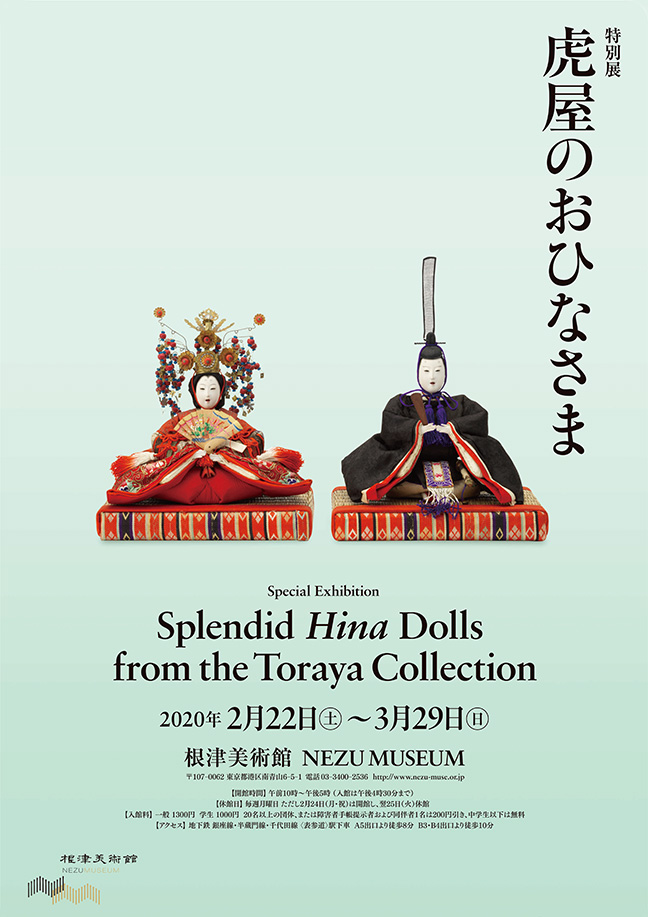
| Closed | Mondays, except January 13, and closed on January 14 |
|---|---|
| Hours | 10 a.m. - 5 p.m.(last entry: 4:30 p.m.) |
| General admission | Adult 1300 yen, Student 1000 yen |
| Gallery | 1/2 |
The third day of the third month: celebrating this day as the Hina Festival, with a display of a pair of hina dolls, male and female, became customary in the Edo period, around 17th century. The additional dolls included in the display, and the many accessories, have gradually increased over time. The set of hina dolls and accessories that Kurokawa Mitsukage (1871-1957), the fourteenth-generation head of the Toraya, a Japanese confectionary business with a long history, built for his daughter Kazuko is a superb collection, in both quality and quantity, that shares the brilliance of the past with us. The hina dolls are elegant emperor and empress dolls made by Maruhei Ōki Doll Shop in Kyoto. The majority of the accessories, however, were made by the Nanasawaya in Ikenohata, Ueno, Tokyo (then Edo); they include a cornucopia of miniature furnishings and other pieces. In this exhibition, these works from the Toraya Collection will be joined by furnishings and accessories for trousseaus from the Nezu Museum’s collection. Visitors will be able to compare the miniature hina accessories with the trousseau items on which they were modeled as they enjoy the world of exquisite Edo-period craftsmanship both embody.
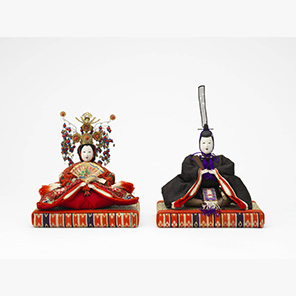
-
Hina Dolls, Emperor and Empress
By Maruhei Ōki Doll Shop, Kyoto -
Japan Meiji period, 19th century
Toraya Confectionery Co. Ltd. - These dairi-bina (emperor and empress dolls) were made by Maruhei Ōki, a doll shop in Kyoto that was founded in the Meiwa era (1764-71). They were purchased by Kurokawa Mitsukage, the fourteenth-generation head of the Toraya, and are thought to date from the mid Meiji period. The facial features of this pair of dolls, with their serene almond-shaped eyes, are elegant indeed.
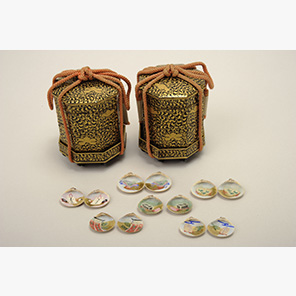
- Pair of Shell Game Boxes with Peony and Scroll Design
-
Japan Edo period, 19th century
Toraya Confectionery Co. Ltd. - These boxes, a type of hina accessory, hold the shells used in the shell-matching game. They are decorated in peony and scroll design maki-e. Matching pictures were painted on each pair of baby clamshells, with each pair’s picture different from the others.
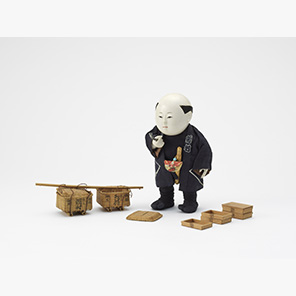
- Gosho Doll: Shimamura
-
Japan Edo-Meiji periods, 19th century
Toraya Confectionery Co. Ltd. - This doll is one of the Gosho dolls in the Toraya Collection. “Shimamura” probably refers to a famous catering service in Nihonbashi, that scored at the highest rank on the “Great Edo Cookery Rankings. "
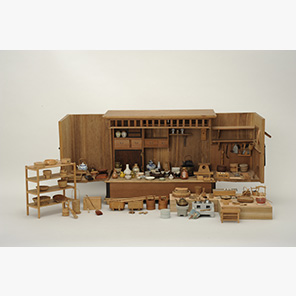
- Kitchen Equipment
-
Japan Edo period, 19th century
Toraya Confectionery Co. Ltd. - This set of miniature kitchen equipment is thought to have been made by the Nanasawaya. Types of equipment not recognized earlier have been newly discovered, bringing the total in this set to approximately 100 items.










